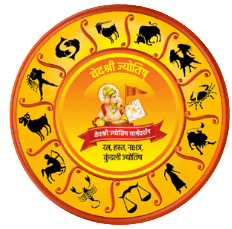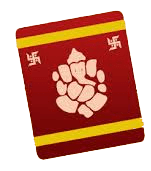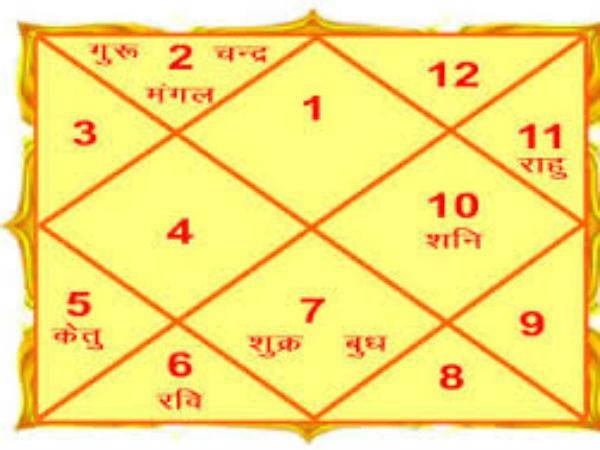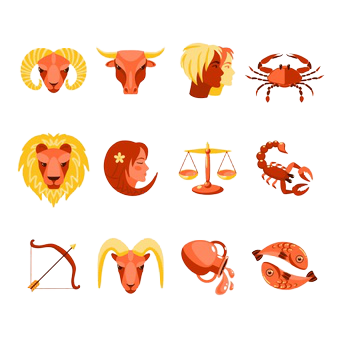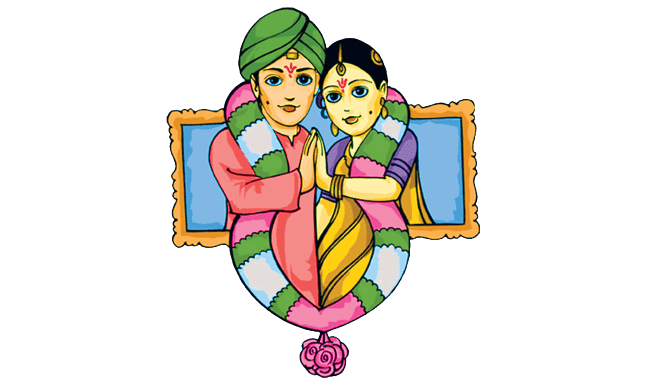What are Rashi impact on your kundali?
There flourishes the divine Surya, the lord of the day,
who is the sole cause and the soul of the Universe, who
illumines all the worlds and who daily brings Creation,
Destruction, and Protection.
The time measured from a second (required for winking the
eye once) up to a year and the duration of each Rashi
(zodiacal Rashi) have been explained along with
astronomical calculations and characteristics of the
grahas.
In the section of Horoscopy, the various Dasha divisions
have (also) been dealt with. But those with lesser
understanding capacity need more scientific explanation as
they cannot grasp all (from Brihat Jataka).
Notes: This implies that the present work has simplified
explanations based on Brihat Jataka. Further additions are
made by the author so an average student can grasp more.
In order that the effects which were declared by the old
masters, who were able to predict the future accurately,
are clarified lucidly, I shall state the gist of the ocean
of Horary Science.
The names of the twelve Rashis are: Mesh, Vrishabh,
Mithun, Kark, Simh, Kanya, Tula, Vrischik, Dhanu, Makar,
Kumbh, and Meen in their order.
The Rashi Kanya is described thus: a virgin seated in a
boat with fire and corn in her hands. Tula is represented
by a man holding scales (balance), while Meen resembles a
pair of fish. The Rashi Makar is a deer-faced crocodile,
while Dhanu looks like a man holding a bow and having a
hip like that of a horse. The Rashis Mesh, Vrishabh, Simh,
Kark, and Vrischik respectively have the forms of a ram,
ox, lion, crab, and scorpion, true to their (Sanskrit)
names. Mithun is imagined to be a combination of a male
and a female (a couple) holding a staff and lute
respectively.
Vrischik, Meen, Makar, and Kark are watery Rashis. Tula,
Kumbh, Vrishabh, and Kanya are water resorter Rashis.
Remaining Rashis are land resorters. Simh’s abode is
mountain’s caves. The habitations for Mesh, Tula, Mithun,
and Dhanu are in their order: plateau, city, village, and
warfield. The Rashis Kark, Vrischik, and Meen are reptile
Rashis, especially Vrischik, the scorpion Rashi.
Quadruped Rashis are: the second half of Dhanu, the first
half of Makar, the whole portions of Mesh, Vrishabh, and
Simh. Biped or human Rashis are: Kumbh, Mithun, Tula,
Kanya, and the first 15 degrees of Dhanu.
The biped Rashis are strong when they house Lagn.
Similarly strong are: the quadruped Rashis holding Karm
Bhava, the reptile Rashis having Yuvati Bhava, and the
watery Rashis if resided by Bandhu Bhava.
Two and a quarter of Nakshatras make one Rasi. Each of the
12 Rashis is constituted by two and quarter of Nakshatras
or nine quarters with Ashvini in the start in Mesh and
Revati at the end in Meen.
One ghatik each at the junctions of Revati-Ashvini,
Aslesha-Magha and Jyeshtha-Mul is called Gandantha. This
evil period rules for four years; some say for six years.
Notes: According to Kasinatha’s Lagnachandrika the first
three ghatis of Mul, Magha and Ashvini are cal]ed Ganda
Nadika. Simi]ar]y the ending five ghatis of each of
Jyeshtha, Aslesha and Revati. Donation of ghee filled
bronze vessel, black cow, and gold are suggested to
overcome the evil of this Gandanadika. (See slokas 89-92
of Ch. I of Lagnachandrika. ) Saravali simply says that
the ending portions of Kark, Meen, and Vrischik are called
Gandantha. Also see Phala Deepika Ch. I, sloka 4, which
calls such portion as Bhasandhi. For more information,
please see Balabhadra’sHoraRatna, Ch.II. The effects of
Gandantha may be seen in Ch. V. of the present work.
The first Navamshas of the 12 Rasis from Mesh onwards are
respectively Mesh, Makar, Tula, and Kark, repeating again
twice. The rulers of the Navamshas are the same as the
Rashi lords. The Dwadashamshas begin from the same Rashi.
The lords of Dreshkanas for each Rashi are in their
respective order: the lord of the same Rashi, the 5th lord
there of and the 9th lord there of.
The Trimshamsh degrees allotted to Mangal, Shani, Guru,
Buddh, and Shukr are 5, 5, 8, 7, and 5 respectively in odd
Rashis. The reverse is true in even Rashis, (i.e. 5, 7, 8,
5, and 5 respectively).
Notes: The division of Trimshamsh will be more useful to
assess the disposition of a female, her luck, etc.. These
have been elaborately dealt with in Chapter 25.
The Rashis Mesh, Vrishabh, Dhanu, Makar, and Kark ascend
with hinder part and are known to be strong between sunset
and sunrise. The Rashi Meen rises with its face in
opposite direction (in both ways) and is strong in
twilight and the rest without Mithun rise with their heads
and are strong during the day. All the Rashis are strong
if they recveive a drsihti from their own lords or from
Buddh or from Guru.
Notes: Brihat Jataka says that Kark is a day Rashi and
Mithun is a night Rashi. Also see sloka 14 of Ch. I of
Jataka Parijata, and sloka 13, Ch. 7 of Sanketa Nidhi for
details of night Rashis and day Rashis.
The 12 Rashis follow classified as male and female one
after the other. These are also known as movable, fixed,
and dual Rashis in their respective order, thus repeated
four times from Mesh onward.
Notes: The Rashis Mesh, Mithun, Simh, Tula, Dhanu, and
Kumbh are male. The rest are female. Mesh, Kark, Tula, and
Makar are movable Rashis. Vrishabh, Simh, Vrischik, and
Kumbh are fixed Rashis. The rest are dual Rashis.
The Rashi Mesh and its Konas are Kshatriyas. Brahmin
Rashis are Kark and its Konas. Mithun and its Konas are
Vaisyas. Vrishabh and its Konas are Sudras.
Notes: The 5th and the 9th form a Rashi are called its
Konas. The Kshatriya Rashis are: Mesh, Simh, and Dhanu.
Brahmin Rashis are: Kark, Vrischik, and Meen. Vaisya
Rashis are: Mithun, Tula, and Kumbh. Sudra Rashis are:
Vrishabh, Kanya, and Makar. These divisions can be used
profitably in Prashn, also.
Face, neck, arms, heart, stomach, groins, private parts,
thighs, knees shank, and feet ars respectively assigned to
the twelve Rashis commencing from Mesh.
For a native, the twelve limbs mentioned above are to be
counted from Lagn onwards.
The following 12 colours are assigned to the 12 Rashis in
their order: red, white, green, pink, brown, grey,
variegated, black, golden yellow, variegated and thick
brown.
Meen and Mesh are of short ascension. Crooked are Vrishabh
and Kumbh. Long ascension Rashis are Makar, Mithun, Kark,
and Dhanu. The rest are of medium length.
Notes: These can be used particularly to assess the form
of a person. If he has Makar on the second house, his face
will be long. Suppose Meen or Mesh ascends, the person
will be short statured.
The following are 12 different names given to the 12
Rashis commencing from Mesh: Kriya, Tavuru, Jituma,
Kulira, Leya, Pathona, Juka, Kaurpi, Taukshika, Akokera,
Hridroga, and Cheththa.
Scholars have given various names to Mesh, etc.. Among
them, “Ali” indicates Vrischik, while “Vanagiri” Simh.
The twelve Bhavas from Lagn are respectively called as:
Tanu, Dhan (Artha), Sahaj, Bandhu, Putr, Ari, Yuvati
(Kalatra), Randhr (Nidhana), Dharm, Karm (Kriya), Labh
(Aya), and Vyaya (Vigama).
Notes: The meanings of the 12 synonyms given above are:
body, wealth, co-born, relatives, children, enemies, wife,
death, righteousness or good work (one of the four ends of
human existence), action, income, and loss. Vigama apart
from meaning loss, also means death or departure. The 12th
being the terminal house of the horoscope is related to
one’s departure from the world.
Kendr, Panaphara, and Apoklima divide the 12 houses in
three groups. Kendras are Tanu, Bandhu, Yuvati, and Karm
Bhava. Dhan, Putr, Randhr, and Labh Bhava are called
Panapharas. The Apoklimas are Sahaj, Ari, Dharm, and Vyaya
Bhavas.
Notes: Panapharas are the next Bhavas to Kendras, while
Apoklimas are the next ones to Panapharas.
Kantaka and Chatushtaya are the other names given to
Kendras (angles), while Charama means Apoklima. Madhya
Kendr is Panaphara.
Bandhu and Randhr Bhava are known as Chaturasra. Ari and
Labh Bhava are otherwise called Shatkona. Sahaj, Ari,
Karm, and Labh Bhava are known as Upachayas.
Alternative names given to Yuvati Bhava are: Jamitra, Asta
Bhavana, Dyuna, Kama and Chitha. Sahaj Bhava is called
Duschikya, Sahaj, and Vikrama.
Aspada (place), Ajna (command), Karma ( livelihood ),
Meshurana and Kha-madhya (zenith point of the firmament)
are all identical with Karm Bhava. Bandhu Bhava is called
Hibuka, Sukh (happiness), Vesma (residence), Pathala
(underworld), Vari (water), and Bandhu (relatives).
Trikon or Kon notes Putr and Dharm Bhava, while Tritrikon
(Kon of the Kon) indicates Dharm Bhava only. The other
names given to Dharm Bhava are: Bhagya, Guru, and Subh.
Notes: According to some Jyotishis, Lagn is also to be
considered as a Kon, apart from being a Kendr. However,
Phala Deepika Ch I, sloka 17 and 18 list 1, 4, 7 and 10 as
Kendras, and specifically mention that the 5th and the 9th
are Konas. Same view is found in Brihat Jataka (Ch. I),
Saravali (Ch. I, sloka 27, Lagnachandika (Ch. I, sloka
6), Jataka Tatwa (Ch. I, Rule 27 and Jataka Parijata (Ch.
I). Thus from these references, only the 5th and the 9th
are called Konas and Tanu Bhava is not.
Vyaya Bhava is called as Rippha, Lopa (void), and Vyaya
(loss), while Dhan Bhava is termed as Vitta (wealth),
Kutumba (family), Vak (speech), and Mangala
(auspiciousness).
Randhr Nidhana (death), Vinasa ( destruction ) and Dukh
(grief) are the other identifications of Randhr Bhava.
All the names Riksha, Bhava, Kshetra, Rashi mean one and
the same thing.
Notes: Bhav also means Rashi (Brihat Jataka, Ch. I, sloka
6).
Udaya (rising), Prag Lagn (the point rising in the east),
Lekha and Hora are the other names given to Lagn. The
various names as enumerated for the Rashis are given by
the ancient preceptors.
Hora means also half of a Rashi. Lalata Rekh. (the 1ine on
the forehead or Brahma Lipi) also indicates Hora. Some
Jyotishis depend on the Hora for the knowledge of future.
Notes: The word Kal indicates the present, past, and
future as known by Trikala.
Thus ends the 1st Chapter entitled “Rashi Vibhaga” in
Horashara of Prithuyasas, son of Varah Mihira.
[{"id":11533,"link":"https:\/\/www.vedashreejyotish.com\/venus-the-giver-of-wealth-and-prosperity\/","name":"venus-the-giver-of-wealth-and-prosperity","thumbnail":{"url":"https:\/\/www.vedashreejyotish.com\/wp-content\/uploads\/2025\/04\/5-min.jpg","alt":"\u0927\u0928-\u0935\u0948\u092d\u0935 \u0915\u0947 \u0926\u093e\u0924\u093e \u0936\u0941\u0915\u094d\u0930 \u092c\u0926\u0932\u0947\u0902\u0917\u0947 \u091a\u093e\u0932 \u2013 \u0907\u0928 \u0930\u093e\u0936\u093f\u092f\u094b\u0902 \u0915\u0940 \u091a\u092e\u0915\u0947\u0917\u0940 \u0915\u093f\u0938\u094d\u092e\u0924! Venus, the giver of wealth and prosperity,"},"title":"\u0927\u0928-\u0935\u0948\u092d\u0935 \u0915\u0947 \u0926\u093e\u0924\u093e \u0936\u0941\u0915\u094d\u0930 \u092c\u0926\u0932\u0947\u0902\u0917\u0947 \u091a\u093e\u0932 \u2013 \u0907\u0928 \u0930\u093e\u0936\u093f\u092f\u094b\u0902 \u0915\u0940 \u091a\u092e\u0915\u0947\u0917\u0940 \u0915\u093f\u0938\u094d\u092e\u0924! Venus, the giver of wealth and prosperity,","author":{"name":"vedashree jyotish","link":"https:\/\/www.vedashreejyotish.com\/author\/vedashree-jyotish\/"},"date":"Apr 13, 2025","dateGMT":"2025-04-13 12:53:24","modifiedDate":"2025-04-13 07:24:48","modifiedDateGMT":"2025-04-13 12:54:48","commentCount":"0","commentStatus":"open","categories":{"coma":"<a href=\"https:\/\/www.vedashreejyotish.com\/category\/grah-bhrman\/\" rel=\"category tag\">grah bhrman<\/a>","space":"<a href=\"https:\/\/www.vedashreejyotish.com\/category\/grah-bhrman\/\" rel=\"category tag\">grah bhrman<\/a>"},"taxonomies":{"post_tag":""},"readTime":{"min":2,"sec":46},"status":"publish","excerpt":""},{"id":11523,"link":"https:\/\/www.vedashreejyotish.com\/sury-sidhant\/","name":"sury-sidhant","thumbnail":{"url":"https:\/\/www.vedashreejyotish.com\/wp-content\/uploads\/2025\/04\/3.jpg","alt":"\u0938\u0942\u0930\u094d\u092f\u0938\u093f\u0927\u094d\u0926\u093e\u0902\u0924"},"title":"\u0938\u0942\u0930\u094d\u092f\u0938\u093f\u0927\u094d\u0926\u093e\u0902\u0924 Sury - sidhant \u0915\u093e\u092f \u0905\u0938\u0924\u094b ?","author":{"name":"vedashree jyotish","link":"https:\/\/www.vedashreejyotish.com\/author\/vedashree-jyotish\/"},"date":"Apr 5, 2025","dateGMT":"2025-04-05 14:04:24","modifiedDate":"2025-04-05 08:41:59","modifiedDateGMT":"2025-04-05 14:11:59","commentCount":"0","commentStatus":"open","categories":{"coma":"<a href=\"https:\/\/www.vedashreejyotish.com\/category\/lifestyle\/astrology\/\" rel=\"category tag\">astrology<\/a>","space":"<a href=\"https:\/\/www.vedashreejyotish.com\/category\/lifestyle\/astrology\/\" rel=\"category tag\">astrology<\/a>"},"taxonomies":{"post_tag":""},"readTime":{"min":3,"sec":17},"status":"publish","excerpt":""},{"id":11503,"link":"https:\/\/www.vedashreejyotish.com\/vishanu-ke-1000-naam\/","name":"vishanu-ke-1000-naam","thumbnail":{"url":"https:\/\/www.vedashreejyotish.com\/wp-content\/uploads\/2025\/04\/1200.jpg","alt":"vishu sahastra naam 1000 naam"},"title":"1000 Vishnu Sahastra Naame |","author":{"name":"vedashree jyotish","link":"https:\/\/www.vedashreejyotish.com\/author\/vedashree-jyotish\/"},"date":"Apr 2, 2025","dateGMT":"2025-04-02 12:31:28","modifiedDate":"2025-04-02 07:02:24","modifiedDateGMT":"2025-04-02 12:32:24","commentCount":"0","commentStatus":"open","categories":{"coma":"<a href=\"https:\/\/www.vedashreejyotish.com\/category\/article\/\" rel=\"category tag\">article<\/a>","space":"<a href=\"https:\/\/www.vedashreejyotish.com\/category\/article\/\" rel=\"category tag\">article<\/a>"},"taxonomies":{"post_tag":""},"readTime":{"min":29,"sec":16},"status":"publish","excerpt":""},{"id":11431,"link":"https:\/\/www.vedashreejyotish.com\/swastik-yoga-asan-or-mantra-ka-prabhav\/","name":"swastik-yoga-asan-or-mantra-ka-prabhav","thumbnail":{"url":"https:\/\/www.vedashreejyotish.com\/wp-content\/uploads\/2025\/03\/jpeg-optimizer_jpg.jpg","alt":"\u0905\u0928\u094d\u0924\u0936\u094d\u091a\u0947\u0924\u0928\u093e \u0914\u0930 \u0938\u094d\u0935\u0938\u094d\u0924\u093f\u0915\u093e\u0938\u0928: \u092e\u093e\u0928\u0938\u093f\u0915 \u0936\u093e\u0902\u0924\u093f, \u0927\u094d\u092f\u093e\u0928 \u0914\u0930 \u0906\u0927\u094d\u092f\u093e\u0924\u094d\u092e\u093f\u0915 \u0935\u093f\u0915\u093e\u0938 \u0915\u0947 \u0932\u093f\u090f \u0938\u0930\u094d\u0935\u0936\u094d\u0930\u0947\u0937\u094d\u0920 \u092e\u093e\u0930\u094d\u0917"},"title":"\u0905\u0928\u094d\u0924\u0936\u094d\u091a\u0947\u0924\u0928\u093e \u0914\u0930 \u0938\u094d\u0935\u0938\u094d\u0924\u093f\u0915\u093e\u0938\u0928: \u092e\u093e\u0928\u0938\u093f\u0915 \u0936\u093e\u0902\u0924\u093f, \u0927\u094d\u092f\u093e\u0928 \u0914\u0930 \u0906\u0927\u094d\u092f\u093e\u0924\u094d\u092e\u093f\u0915 \u0935\u093f\u0915\u093e\u0938 \u0915\u0947 \u0932\u093f\u090f \u0938\u0930\u094d\u0935\u0936\u094d\u0930\u0947\u0937\u094d\u0920 \u092e\u093e\u0930\u094d\u0917","author":{"name":"vedashree jyotish","link":"https:\/\/www.vedashreejyotish.com\/author\/vedashree-jyotish\/"},"date":"Mar 29, 2025","dateGMT":"2025-03-29 13:22:45","modifiedDate":"2025-03-29 07:58:07","modifiedDateGMT":"2025-03-29 13:28:07","commentCount":"0","commentStatus":"open","categories":{"coma":"<a href=\"https:\/\/www.vedashreejyotish.com\/category\/lifestyle\/astrology\/\" rel=\"category tag\">astrology<\/a>","space":"<a href=\"https:\/\/www.vedashreejyotish.com\/category\/lifestyle\/astrology\/\" rel=\"category tag\">astrology<\/a>"},"taxonomies":{"post_tag":""},"readTime":{"min":3,"sec":26},"status":"publish","excerpt":""},{"id":11405,"link":"https:\/\/www.vedashreejyotish.com\/shani-sadesati-2025\/","name":"shani-sadesati-2025","thumbnail":{"url":"https:\/\/www.vedashreejyotish.com\/wp-content\/uploads\/2025\/03\/1.jpg","alt":"shani sadesati 2025"},"title":"\u0936\u0928\u093f \u0935 \u0938\u093e\u0921\u0947\u0938\u093e\u0924\u0940 2025 \u0924\u0941\u092e\u091a\u094d\u092f\u093e \u0930\u093e\u0936\u0940 \u0935\u0930\u0924\u0940 \u0939\u094b\u0923\u093e\u0930\u093e \u092a\u094d\u0930\u092d\u093e\u0935 ?","author":{"name":"vedashree jyotish","link":"https:\/\/www.vedashreejyotish.com\/author\/vedashree-jyotish\/"},"date":"Mar 29, 2025","dateGMT":"2025-03-29 06:07:09","modifiedDate":"2025-03-29 01:02:24","modifiedDateGMT":"2025-03-29 06:32:24","commentCount":"0","commentStatus":"open","categories":{"coma":"<a href=\"https:\/\/www.vedashreejyotish.com\/category\/event-and-festival-april\/\" rel=\"category tag\">event and festival april<\/a>, <a href=\"https:\/\/www.vedashreejyotish.com\/category\/article\/\" rel=\"category tag\">article<\/a>, <a href=\"https:\/\/www.vedashreejyotish.com\/category\/grah-bhrman\/\" rel=\"category tag\">grah bhrman<\/a>","space":"<a href=\"https:\/\/www.vedashreejyotish.com\/category\/event-and-festival-april\/\" rel=\"category tag\">event and festival april<\/a> <a href=\"https:\/\/www.vedashreejyotish.com\/category\/article\/\" rel=\"category tag\">article<\/a> <a href=\"https:\/\/www.vedashreejyotish.com\/category\/grah-bhrman\/\" rel=\"category tag\">grah bhrman<\/a>"},"taxonomies":{"post_tag":""},"readTime":{"min":15,"sec":32},"status":"publish","excerpt":"shani dev sadesati 2025 \u0936\u0928\u093f\u092a\u093e\u0932\u091f \u0935 \u0938\u093e\u0921\u0947\u0938\u093e\u0924\u0940 \u0924\u0941\u092e\u091a\u094d\u092f\u093e \u0930\u093e\u0936\u0940 \u0935\u0930\u0924\u0940 \u0939\u094b\u0923\u093e\u0930\u093e \u092a\u094d\u0930\u092d\u093e\u0935 ?\u0936\u0928\u093f\u092a\u093e\u0932\u091f\u00a0 \u0915\u0947\u0935\u094d\u0939\u093e\u00a0 ?\u0938\u093e\u0921\u0947\u0938\u093e\u0924\u0940 \u092e\u094d\u0939\u0923\u091c\u0947 \u0915\u093e\u092f ?..\u0938\u093e\u0921\u0947\u0938\u093e\u0924\u0940\u0924 \u0915\u093e\u092f \u0915\u093e\u0933\u091c\u0940 \u0918\u094d\u092f\u093e\u0935\u0940. ?\u00a0\u00a0 \u092b\u093e\u0932\u094d\u0917\u0941\u0928 \u0915\u0943\u0937\u094d\u0923.\u0906\u092e\u093e\u0935\u0938\u094d\u092f\u093e \u0936\u0928\u093f\u0935\u093e\u0930 \u0968\u096f \u092e\u093e\u0930\u094d\u091a \u0968\u0966\u0968\u096b \u0930\u093e\u0924\u094d\u0930\u0940\u00a0 \u0966\u096f:\u096a\u0968 \u092e\u0940 \u0936\u0928\u0940 \u092e\u0940\u0928 \u0930\u093e\u0936\u0940\u0924 \u092a\u094d\u0930\u0935\u0947\u0936 \u0915\u0930\u0940\u0924 \u0906\u0939\u0947\u0924\u00a0"},{"id":11391,"link":"https:\/\/www.vedashreejyotish.com\/living-room-vastu-kontya-doshela-kashi\/","name":"living-room-vastu-kontya-doshela-kashi","thumbnail":{"url":"https:\/\/www.vedashreejyotish.com\/wp-content\/uploads\/2022\/01\/xkundali_milan.jpg.pagespeed.ic_.bUvqgumT2Y-min-1.png","alt":"kundali janm kundali"},"title":"living Room as pre vastu | \u0935\u093e\u0938\u094d\u0924\u0941\u0928\u0941\u0938\u093e\u0930 living Room \u0932\u093f\u0935\u094d\u0939\u093f\u0902\u0917 \u0930\u0942\u092e\/\u0921\u094d\u0930\u0949\u0908\u0902\u0917 \u0930\u0942\u092e\/\u0939\u0949\u0932\u091a\u0940 (\u0926\u093f\u0935\u093e\u0923\u0916\u093e\u0928\u093e) \u0926\u093f\u0936\u093e \u0935 \u0930\u091a\u0928\u093e.","author":{"name":"vedashree jyotish","link":"https:\/\/www.vedashreejyotish.com\/author\/vedashree-jyotish\/"},"date":"Mar 25, 2025","dateGMT":"2025-03-25 06:36:13","modifiedDate":"2025-03-25 01:06:14","modifiedDateGMT":"2025-03-25 06:36:14","commentCount":"0","commentStatus":"open","categories":{"coma":"<a href=\"https:\/\/www.vedashreejyotish.com\/category\/lifestyle\/astrology\/\" rel=\"category tag\">astrology<\/a>","space":"<a href=\"https:\/\/www.vedashreejyotish.com\/category\/lifestyle\/astrology\/\" rel=\"category tag\">astrology<\/a>"},"taxonomies":{"post_tag":""},"readTime":{"min":3,"sec":35},"status":"publish","excerpt":""},{"id":11368,"link":"https:\/\/www.vedashreejyotish.com\/panchatatve-vastu-shastra\/","name":"panchatatve-vastu-shastra","thumbnail":{"url":"https:\/\/www.vedashreejyotish.com\/wp-content\/uploads\/2025\/03\/jpeg-optimizer_vastu-shtra.jpg","alt":"\u092a\u0902\u091a\u0924\u0924\u094d\u0924\u094d\u0935\u0947\/\u092a\u0902\u091a\u092e\u0939\u093e\u092d\u0942\u0924\u0947 \u0906\u0923\u093f \u0935\u093e\u0938\u094d\u0924\u0941\u0936\u093e\u0938\u094d\u0924\u094d\u0930: \u091c\u0940\u0935\u0928\u093e\u091a\u093e \u0938\u092e\u0924\u094b\u0932 \u0938\u093e\u0927\u0923\u093e\u0930\u0947 \u092a\u094d\u0930\u093e\u091a\u0940\u0928 \u0924\u0924\u094d\u0924\u094d\u0935\u091c\u094d\u091e\u093e\u0928 Panchatatve vastu shastra"},"title":"5 \u092a\u0902\u091a\u0924\u0924\u094d\u0924\u094d\u0935\u0947\/\u092a\u0902\u091a\u092e\u0939\u093e\u092d\u0942\u0924\u0947 \u0906\u0923\u093f \u0935\u093e\u0938\u094d\u0924\u0941\u0936\u093e\u0938\u094d\u0924\u094d\u0930: \u091c\u0940\u0935\u0928\u093e\u091a\u093e \u0938\u092e\u0924\u094b\u0932 \u0938\u093e\u0927\u0923\u093e\u0930\u0947 \u092a\u094d\u0930\u093e\u091a\u0940\u0928 \u0924\u0924\u094d\u0924\u094d\u0935\u091c\u094d\u091e\u093e\u0928 | Panchatatve vastu shastra","author":{"name":"vedashree jyotish","link":"https:\/\/www.vedashreejyotish.com\/author\/vedashree-jyotish\/"},"date":"Mar 23, 2025","dateGMT":"2025-03-23 06:04:36","modifiedDate":"2025-03-23 06:43:11","modifiedDateGMT":"2025-03-23 12:13:11","commentCount":"0","commentStatus":"open","categories":{"coma":"<a href=\"https:\/\/www.vedashreejyotish.com\/category\/vastu\/\" rel=\"category tag\">vastu<\/a>","space":"<a href=\"https:\/\/www.vedashreejyotish.com\/category\/vastu\/\" rel=\"category tag\">vastu<\/a>"},"taxonomies":{"post_tag":""},"readTime":{"min":3,"sec":41},"status":"publish","excerpt":""},{"id":11331,"link":"https:\/\/www.vedashreejyotish.com\/pitta-dosh-kya-hota-hai-or-upay\/","name":"pitta-dosh-kya-hota-hai-or-upay","thumbnail":{"url":"https:\/\/www.vedashreejyotish.com\/wp-content\/uploads\/2024\/01\/download.jpg","alt":"pranayam"},"title":"Pitta dosh upay | \u092a\u093f\u0924\u094d\u0924 \u0926\u094b\u0937: \u0932\u0915\u094d\u0937\u0923, \u0930\u094b\u0917 \u0914\u0930 \u0907\u0938\u0947 \u0938\u0902\u0924\u0941\u0932\u093f\u0924 \u0930\u0916\u0928\u0947 \u0915\u0947 \u0906\u0938\u093e\u0928 \u0909\u092a\u093e\u092f","author":{"name":"vedashree jyotish","link":"https:\/\/www.vedashreejyotish.com\/author\/vedashree-jyotish\/"},"date":"Mar 18, 2025","dateGMT":"2025-03-18 13:28:10","modifiedDate":"2025-03-23 05:39:37","modifiedDateGMT":"2025-03-23 11:09:37","commentCount":"0","commentStatus":"open","categories":{"coma":"<a href=\"https:\/\/www.vedashreejyotish.com\/category\/lifestyle\/astrology\/\" rel=\"category tag\">astrology<\/a>","space":"<a href=\"https:\/\/www.vedashreejyotish.com\/category\/lifestyle\/astrology\/\" rel=\"category tag\">astrology<\/a>"},"taxonomies":{"post_tag":""},"readTime":{"min":2,"sec":24},"status":"publish","excerpt":""},{"id":11327,"link":"https:\/\/www.vedashreejyotish.com\/mulank-1-vivah-yog\/","name":"mulank-1-vivah-yog","thumbnail":{"url":"https:\/\/www.vedashreejyotish.com\/wp-content\/uploads\/2025\/03\/jpeg-optimizer_1.jpg","alt":"Mulank 1 \u092e\u0942\u0932\u093e\u0902\u0915 1 \u0915\u093e \u0935\u093f\u0935\u093e\u0939 \u092d\u093e\u0917\u094d\u092f \u0915\u093e \u092b\u0932 ? \u0905\u092a\u0928\u093e \u092e\u0941\u0932\u093e\u0902\u0915-\u092d\u093e\u0917\u094d\u092f\u0905\u0902\u0915 \u0915\u0948\u0938\u0947 \u092a\u0924\u093e \u0915\u0930\u0947 ? \u092f\u0939\u093e\u0901 \u0906\u092a\u0915\u094b \u092e\u0942\u0932 \u0905\u0902\u0915 \u0905\u0930\u094d\u0925\u093e\u0924 \u092e\u0942\u0932\u093e\u0902\u0915 \u092c\u0928\u093e\u0928\u093e \u092c\u0924\u093e \u0930\u0939\u0947 \u0939\u0948\u0902\u0964 \u092f\u0939 \u091c\u0928\u094d\u092e \u0915\u0940 \u0924\u093e\u0930\u0940\u0916 \u0938\u0947 \u092c\u0928\u093e\u092f\u093e \u091c\u093e\u0924\u093e \u0939\u0948\u0964"},"title":"Mulank 1 \u092e\u0942\u0932\u093e\u0902\u0915 1 \u0915\u093e \u0935\u093f\u0935\u093e\u0939 \u092d\u093e\u0917\u094d\u092f \u0915\u093e \u092b\u0932 ?","author":{"name":"vedashree jyotish","link":"https:\/\/www.vedashreejyotish.com\/author\/vedashree-jyotish\/"},"date":"Mar 18, 2025","dateGMT":"2025-03-18 12:56:36","modifiedDate":"2025-03-23 05:41:19","modifiedDateGMT":"2025-03-23 11:11:19","commentCount":"0","commentStatus":"open","categories":{"coma":"<a href=\"https:\/\/www.vedashreejyotish.com\/category\/lifestyle\/astrology\/\" rel=\"category tag\">astrology<\/a>","space":"<a href=\"https:\/\/www.vedashreejyotish.com\/category\/lifestyle\/astrology\/\" rel=\"category tag\">astrology<\/a>"},"taxonomies":{"post_tag":""},"readTime":{"min":7,"sec":30},"status":"publish","excerpt":""},{"id":11325,"link":"https:\/\/www.vedashreejyotish.com\/5-mukhi-rudraksha\/","name":"5-mukhi-rudraksha","thumbnail":{"url":"https:\/\/www.vedashreejyotish.com\/wp-content\/uploads\/2024\/04\/5-mukhi-rudraksha-benefits.webp","alt":"5 Mukhi Rudraksha, Five Face Rudraksha, Size 14X17 mm"},"title":"5 mukhi Rudraksha \u092e\u0941\u0916\u0940 \u0930\u0941\u0926\u094d\u0930\u093e\u0915\u094d\u0937 \u092a\u0939\u0928\u0928\u0947 \u0915\u0947 \u092b\u093e\u092f\u0926\u0947","author":{"name":"vedashree jyotish","link":"https:\/\/www.vedashreejyotish.com\/author\/vedashree-jyotish\/"},"date":"Mar 17, 2025","dateGMT":"2025-03-17 13:12:10","modifiedDate":"2025-03-17 07:42:13","modifiedDateGMT":"2025-03-17 13:12:13","commentCount":"0","commentStatus":"open","categories":{"coma":"<a href=\"https:\/\/www.vedashreejyotish.com\/category\/%e0%a4%b0%e0%a5%81%e0%a4%a6%e0%a5%8d%e0%a4%b0%e0%a4%be%e0%a4%95%e0%a5%8d%e0%a4%b7-1-%e0%a4%b8%e0%a5%87-21-%e0%a4%ae%e0%a5%81%e0%a4%96%e0%a5%80\/\" rel=\"category tag\">\u0930\u0941\u0926\u094d\u0930\u093e\u0915\u094d\u0937 1 \u0938\u0947 21 \u092e\u0941\u0916\u0940<\/a>","space":"<a href=\"https:\/\/www.vedashreejyotish.com\/category\/%e0%a4%b0%e0%a5%81%e0%a4%a6%e0%a5%8d%e0%a4%b0%e0%a4%be%e0%a4%95%e0%a5%8d%e0%a4%b7-1-%e0%a4%b8%e0%a5%87-21-%e0%a4%ae%e0%a5%81%e0%a4%96%e0%a5%80\/\" rel=\"category tag\">\u0930\u0941\u0926\u094d\u0930\u093e\u0915\u094d\u0937 1 \u0938\u0947 21 \u092e\u0941\u0916\u0940<\/a>"},"taxonomies":{"post_tag":""},"readTime":{"min":2,"sec":41},"status":"publish","excerpt":""},{"id":11323,"link":"https:\/\/www.vedashreejyotish.com\/rashi-fal-2025\/","name":"rashi-fal-2025","thumbnail":{"url":"https:\/\/www.vedashreejyotish.com\/wp-content\/uploads\/2022\/01\/Janampatri-removebg-preview-min-1.png","alt":""},"title":"Rashi Fal 2025 \u0915\u093e \u0930\u093e\u0936\u093f\u092b\u0932","author":{"name":"vedashree jyotish","link":"https:\/\/www.vedashreejyotish.com\/author\/vedashree-jyotish\/"},"date":"Mar 17, 2025","dateGMT":"2025-03-17 12:29:09","modifiedDate":"2025-03-17 06:59:10","modifiedDateGMT":"2025-03-17 12:29:10","commentCount":"0","commentStatus":"open","categories":{"coma":"<a href=\"https:\/\/www.vedashreejyotish.com\/category\/rashi-fal\/\" rel=\"category tag\">Rashi fal<\/a>","space":"<a href=\"https:\/\/www.vedashreejyotish.com\/category\/rashi-fal\/\" rel=\"category tag\">Rashi fal<\/a>"},"taxonomies":{"post_tag":""},"readTime":{"min":8,"sec":45},"status":"publish","excerpt":""},{"id":11302,"link":"https:\/\/www.vedashreejyotish.com\/lagna-yog-yantra\/","name":"lagna-yog-yantra","thumbnail":{"url":"https:\/\/www.vedashreejyotish.com\/wp-content\/uploads\/2025\/03\/71Ync3ISVRL.jpg","alt":"lagna yog yantra"},"title":"Lagna Yog Yantra | \u0932\u0917\u094d\u0928 \u092f\u094b\u0917 \u092f\u0902\u0924\u094d\u0930: \u0935\u093f\u0935\u093e\u0939 \u0906\u0923\u093f \u0917\u094d\u0930\u0939 \u0926\u094b\u0937 \u0928\u093f\u0935\u093e\u0930\u0923\u093e\u0938\u093e\u0920\u0940\u091a\u0947 \u092a\u094d\u0930\u092d\u093e\u0935\u0940 \u0938\u093e\u0927\u0928","author":{"name":"vedashree jyotish","link":"https:\/\/www.vedashreejyotish.com\/author\/vedashree-jyotish\/"},"date":"Mar 16, 2025","dateGMT":"2025-03-16 11:46:44","modifiedDate":"2025-03-16 08:10:29","modifiedDateGMT":"2025-03-16 13:40:29","commentCount":"0","commentStatus":"open","categories":{"coma":"<a href=\"https:\/\/www.vedashreejyotish.com\/category\/article\/\" rel=\"category tag\">article<\/a>","space":"<a href=\"https:\/\/www.vedashreejyotish.com\/category\/article\/\" rel=\"category tag\">article<\/a>"},"taxonomies":{"post_tag":""},"readTime":{"min":2,"sec":46},"status":"publish","excerpt":""}] 